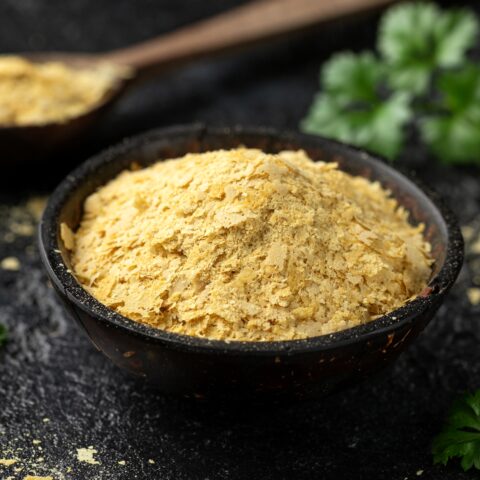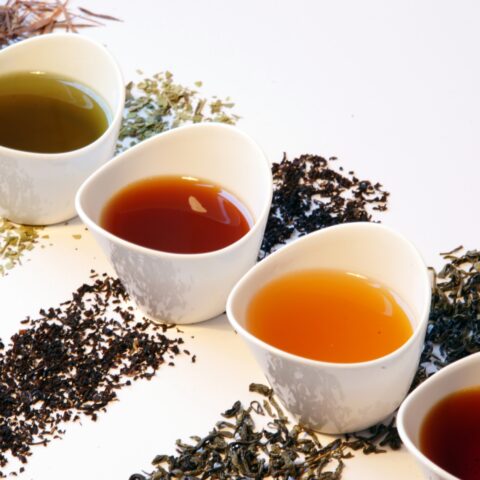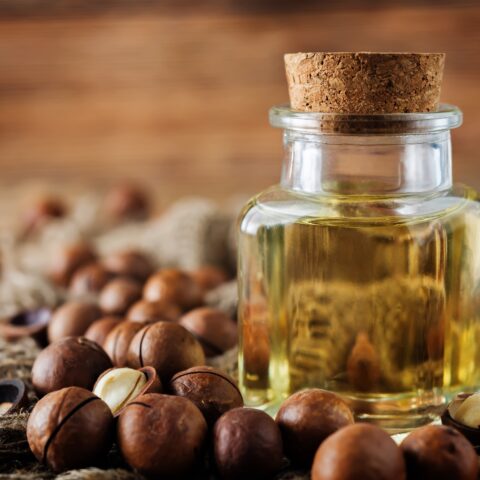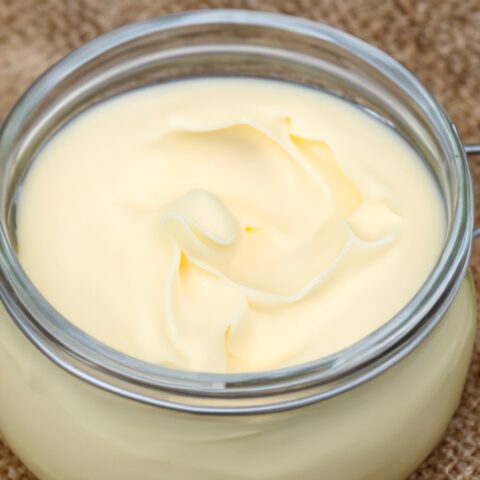Millet: A Gluten-Free Grain You Should Avoid
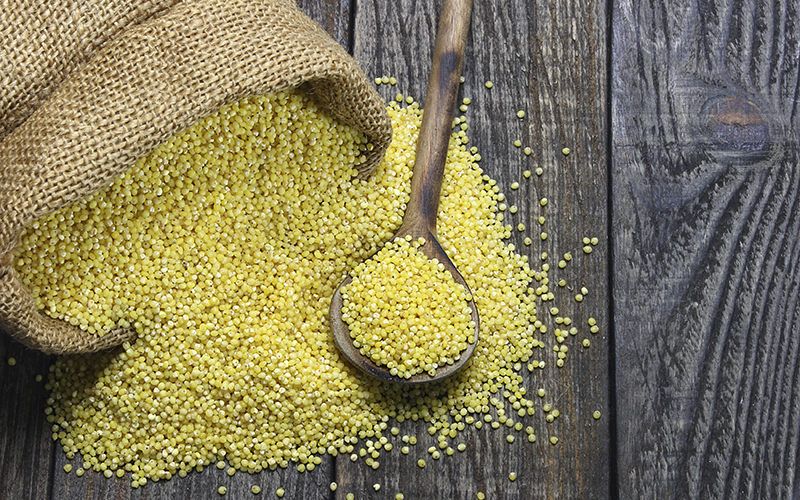
Gluten-free grains like millet are not a healthy substitute for grains that contain gluten.
Over the past 20 years, more and more people worldwide have become aware of The Paleo Diet, which really is not a diet at all, but rather a lifelong way of eating to reduce the risk of chronic disease and maximize health and well-being. One of the fundamental principles of The Paleo Diet is to eliminate or drastically reduce consumption of cereal grains, whether they are refined or whole. Currently, 8 cereal grains (wheat, corn, rice, barley, sorghum, oats, rye, and millet) provide 56% of the food energy and 50% of the protein consumed on earth.3 However, from an evolutionary perspective, these foods were rarely or never consumed by our hunter gatherer ancestors.3
Swapping gluten-free grains like millet or oats for gluten-containing grains like wheat, barley, and rye does not eliminate the health risks of eating grains. In fact, millet comes with its own health problems that are well-documented around the world.
What Is Millet?
Millet is not a single plant species (as are most other cereal grains), but rather a broadly interpreted grouping of about 500 species of grass seeds worldwide.13 Only a few species of millet are commonly cultivated as food crops. Worldwide, pearl millet (Pennisetum glaucum) is the most widely produced millet15 and is cultivated extensively in Africa and India. Finger millet (Eleusine coracana, proso millet (Panicum miliaceum), fonio millet (Digitaria exilis), and foxtail millet (Setaria italic) are also important crop species in developing countries.13, 15 Nevertheless millet is a minor cereal grain in terms of global economic importance. Worldwide production of millet is about 1% of either wheat or rice.13
Because millets require little water and are highly drought resistant, they grow well in arid and semi arid regions of the world such as in countries surrounding the Sahara desert in Africa and in dry areas in India and Asia. Further, millet is an attractive agricultural crop for farmers in these regions because under good conditions, it can yield two harvests per year13 and is resistant to pests and pathogens.
Millet is the seed of grass and that makes it a grain.
All Grains Lack Nutrients
Back in 1999, when I first made the suggestion that as a species we would be a lot healthier if we reduced or eliminated cereal consumption,3 I was criticized by nutrition professionals who believed that the elimination of an entire food group (cereals) would cause dietary deficiencies. This statement is not supported by any experimental evidence. In fact, the contrary is true. As I have previously pointed out, elimination of cereal grains actually increases the nutrient density of the 13 vitamins and minerals most lacking in the U.S. diet4, 5 – assuming cereal grains are replaced by fresh fruits, vegetables, meats, poultry, fish, seafood and eggs.
All Grains Contain Antinutrients
Besides this fundamental lack of knowledge concerning the nutrient density of cereal grains, nearly all classically trained nutritionists have little or no appreciation for the antinutrients present in grains. As the name implies, antinutrients are dietary substances which interfere with our normal metabolism and physiology. Cereal grains are generally concentrated sources of numerous antinutrients and may produce undesirable health effects,3 particularly when consumed as daily staples.
Gluten-Free Grains Are Still Unhealthy
In the U.S., so-called gluten-free foods have become incredibly popular as many people recognize that they simply feel better by eliminating the 3 gluten containing grains (wheat, rye and barley). Gluten-conscious consumers frequently replace wheat, rye and barley with non-gluten containing grains (rice, corn, oats, sorghum and millet) in the mistaken belief that these 5 non-gluten grains are harmless.
However, even the 5 non-gluten containing grains should be avoided for a variety of reasons.3
Why Millet Is Unhealthy
Unless you are a vegan, a vegetarian, or in search of gluten-free grains, most Americans and Westerners have never tasted millet. Nevertheless, you don’t have to look very far to find this cereal grain (grass seed) at most health food stores. If you only dine upon millet dishes once in a blue moon, it will likely have zero repercussions upon your health, but be aware that millet like all grains is a nutrient-poor, antinutrient-laden food.
Millet Can Cause Iodine Deficiency and Goiter
Millet adversely affects iodine metabolism and may cause goiter (swelling of the neck) when eaten regularly. Wherever and whenever millet becomes a staple food worldwide, the incidence of goiter increases and abnormalities of thyroid function and iodine metabolism occur. Eating millet regularly may cause multiple dietary deficiencies and nutrient related diseases,3 including impairment of iodine metabolism and risk for goiter.
Wherever and whenever millet becomes a staple food worldwide, the incidence of goiter increases and abnormalities of thyroid function and iodine metabolism occur.2,7,16-20 Further, animal studies in rats, pet birds, and goats and tissue (in vitro) studies demonstrate unequivocally that this cereal plays a major role in causing goiter, thyroid abnormalities and impairment of iodine metabolism.1, 8, 10-12, 22
Iodine is an essential nutrient for humans, without which we most conspicuously develop goiter (an enlargement of the thyroid gland about the neck). Additionally, lack of iodine in the diet impairs cognitive development in growing infants and children, miscarriage in pregnant women and brain and nervous system dysfunction in adults.24, 25
Originally, it was thought that goiter occurred primarily from a deficiency of iodine in our food supply and water. Accordingly, in the U.S. and elsewhere most dietary salt (NaCl) has been fortified with iodine. An unappreciated aspect of iodine metabolism is that metabolic deficiencies of this nutrient can still occur even when dietary intake of iodine appears to be sufficient.7 Although virtually unknown to most nutritionists, elements found in millet represent powerful antinutrients that impair iodine metabolism and frequently cause goiter and symptoms of iodine deficiency.
Millet is a staple crop in parts of Africa, India, and Asia. Higher millet consumption is tied to higher incidence of goiter. In the Sudan region (Darfur Province) of Africa, dietary surveys show that millet consumption in three communities (Kas, Tawaila and Nyala) was the primary source of food calories, respectively yielding 73.6%, 66.7%, and 37.1% of total daily energy.20 In this study, the occurrence of goiter was outrageously high, greater than almost anywhere else in the world. The incidence of goiter for girls in these three communities was 75%, 55%, and 13%, respectively; for boys it was 46%, 35%, and 10%, respectively. Similar high rates of goiter and thyroid disorders have been reported for school children in the Gujarat district of Western India where millet is a staple food.2
Goitrogens: Why Millet Can Cause Goiter
Goitrogens are dietary substances which impair thyroid and iodine metabolism and may ultimately cause the development of goiter. As I have previously alluded, a few scientists in the nutritional community early on appreciated that high millet diets promoted goiter. However, it was not completely understood how millet produced its goitrogenic effect. Subsequent discoveries and experiments over the past 35 years now show that compounds known as flavonoids in millets are responsible for causing iodine dysfunction and may in turn produce goiter when consumed as staples.6, 7, 21, 23
All millets are concentrated sources of compounds known as polyphenolics, some of which are referred to as flavonoids. Numerous flavonoids have been found in millets including apigenin, luteolin , kaempferol and vitexin; all of which severely impair thyroid function and iodine metabolism6, 10-12, 21, 23 and cause goiter in animal and tissue models.1, 8, 10-12, 22 Although it is not completely understood, flavonoids from millets appear to inhibit iodine uptake by most cells in the body, impair secretion of thyroid hormones, and reduce organification of Iodine by the enzyme thyroperoxidase.6, 7, 10, 23
Additional Antinutrients in Millets
Although a few scientific articles suggest that millets may possess positive health effects,26, 27 these papers and authors seem to be completely unaware of the numerous antinutrients found in millets and their potential for disrupting nutrition and health.
Let’s begin with the mistaken notion that millets are good sources of calcium.26, 27 Upon chemical analysis on paper, this statement may be true, but in the body (in vivo), nothing could be further from the truth. Calcium, along with iron and zinc that may be present in millets are actually poorly absorbed in our bodies because phytates, tannins and other compounds prevent their assimilation.28-32 Accordingly, high cereal grain diets whether millet derived or not, frequently result in multiple nutrient deficiencies including calcium, iron and zinc.3
In addition to their high phytate, flavonoid and polyphenolic contents, millets are also concentrated sources of other antinutrients including protease inhibitors (trypsin, chymotrypsin, alpha amylase and cysteine)33-35 and steroidal saponins.36, 37 Cereal grain protease inhibitors likely elicit adverse effects upon the pancreas when consumed as staple foods,3 and saponins are known to increase intestinal permeability and may contribute to chronic low level systemic inflammation.
The Bottom Line
Taken in its entirety, an overwhelming scientific literature demonstrates that millets are second rate foods that when consumed regularly may adversely affect iodine metabolism and elicit goiter. I’m not completely sure where the USDA dietitians derived their recommendations for whole grain consumption, but it certainly could not have come from their familiarity with the millet literature.
References
1. Abel Gadir WS, Adam SE. Development of goitre and enterohepatonephropathy in Nubian Goats fed with pearl millet (Pennisetum typhoides). Vet J. 1999 Mar;157(2):178-85.
2. Brahmbhatt S, Brahmbhatt RM, Boyages SC. Thyroid ultrasound is the best prevalence indicator for assessment of iodine deficiency disorders: a study in rural/tribal schoolchildren from Gujarat (Western India). Eur J Endocrinol. 2000 Jul;143(1):37-46.
3. Cordain L. (1999). Cereal grains: humanity’s double edged sword. World Review of Nutrition and Dietetics, 84: 19-73.
4. Cordain L. The nutritional characteristics of a contemporary diet based upon Paleolithic food groups. J Am Neutraceut Assoc 2002; 5:15-24.
5. Cordain L, Eaton SB, Sebastian A, Mann N, Lindeberg S, Watkins BA, O’Keefe JH, Brand-Miller J. Origins and evolution of the western diet: Health implications for the 21st century. Am J Clin Nutr 2005;81:341-54.
6. de Souza Dos Santos MC, Gonçalves CF, Vaisman M, Ferreira AC, de Carvalho DP. Impact of flavonoids on thyroid function. Food Chem Toxicol. 2011 Oct;49(10):2495-502
7. Elnour A, Hambraeus L, Eltom M, Dramaix M, Bourdoux P. Endemic goiter with iodine sufficiency: a possible role for the consumption of pearl millet in the etiology of endemic goiter. Am J Clin Nutr. 2000 Jan;71(1):59-66.
8. Elnour A, Liedén S, Bourdoux P, Eltom M, Khalid SA, Hambraeus L. Traditional fermentation increases goitrogenic activity in pearl millet. Ann Nutr Metab. 1998;42(6):341-9.
9. Elnour A, Liedén S, Bourdoux P, Eltom M, Khalid SA, Hambraeus L. The goitrogenic effect of two Sudanese pearl millet cultivars in rats. Nutr Res 1997; Mar (17): 533–546.
10. Gaitan E, Cooksey RC, Legan J, Lindsay RH. Antithyroid effects in vivo and in vitro of vitexin: a C-glucosylflavone in millet. J Clin Endocrinol Metab. 1995 Apr;80(4):1144-7.
11. Gaitan E, Lindsay RH, Reichert RD, Ingbar SH, Cooksey RC, Legan J, Meydrech EF, Hill J, Kubota K. Antithyroid and goitrogenic effects of millet: role of C-glycosylflavones. J Clin Endocrinol Metab. 1989 Apr;68(4):707-14.
12. Gaitan E, Lindsay RH, Cooksey RC, Hill J, Reichert RD, Ingbar SH. The thyroid effects of C-glycosylflavonoids in millet. Prog Clin Biol Res. 1988;280:349-63
13. Hunt HV, Badakshi F, Romanova O, Howe CJ, Jones MK, Heslop-Harrison JS. Reticulate evolution in Panicum (Poaceae): the origin of tetraploid broomcorn millet, P. miliaceum. J Exp Bot. 2014 Jul;65(12):3165-75.
14. Lu H, Zhang J, Liu KB, Wu N, Li Y, Zhou K, Ye M, Zhang T, Zhang H, Yang X, Shen L, Xu D, Li Q. Earliest domestication of common millet (Panicum miliaceum) in East Asia extended to 10,000 years ago. Proc Natl Acad Sci U S A. 2009 May 5;106(18):7367-72
15. McDonough CM, Rooney LW, Serna-Saldivar SO. (2000). “The Millets”. Food Science and Technology: Handbook of Cereal Science and Technology (CRC Press). 99 2nd ed: 177–210.
16. Medani AM1, Elnour AA, Saeed AM. Endemic goitre in the Sudan despite long-standing programmes for the control of iodine deficiency disorders. Bull World Health Organ. 2011 Feb 1;89(2):121-6.
17. Moreno-Reyes R1, Boelaert M, el Badawi S, Eltom M, Vanderpas JB. Endemic juvenile hypothyroidism in a severe endemic goitre area of Sudan. Clin Endocrinol (Oxf). 1993 Jan;38(1):19-24.
18. [No authors listed] Millet–a possibly goitrogenic cereal. Nutr Rev. 1983 Apr;41(4):113-6.
19. Osman AK, Basu TK, Dickerson JW. A goitrogenic agent from millet (Pennisetum typhoides) in Darfur Province, Western Sudan. Ann Nutr Metab. 1983;27(1):14-8.
20. Osman AK, Fatah AA. Factors other than iodine deficiency contributing to the endemicity of goitre in Darfur Province (Sudan). J Hum Nutr. 1981 Aug;35(4):302-9.
21. Sartelet H, Serghat S, Lobstein A, Ingenbleek Y, Anton R, Petitfrère E, Aguie-Aguie G, Martiny L, Haye B. Flavonoids extracted from fonio millet (Digitaria exilis) reveal potent antithyroid properties. Nutrition. 1996 Feb;12(2):100-6.
22. Schoemaker NJ, Lumeij JT, Dorrestein GM, Beynen AC. Nutrition-related problems in pet birds]. Tijdschr Diergeneeskd. 1999 Jan 15;124(2):39-43.
23. Schröder-van der Elst JP1, Smit JW, Romijn HA, van der Heide D. Dietary flavonoids and iodine metabolism. Biofactors. 2003;19(3-4):171-6.
24. Zimmermann MB.The role of iodine in human growth and development. Semin Cell Dev Biol. 2011 Aug;22(6):645-52.
25. Taylor PN1, Okosieme OE, Dayan CM, Lazarus JH. Therapy of endocrine disease: Impact of iodine supplementation in mild-to-moderate iodine deficiency: systematic review and meta-analysis. Eur J Endocrinol. 2013 Nov 22;170(1):R1-R15. doi: 10.1530/EJE-13-0651. Print 2014 Jan.
26. Devi PB, Vijayabharathi R, Sathyabama S, Malleshi NG, Priyadarisini VB. Health benefits of finger millet (Eleusine coracana L.) polyphenols and dietary fiber: a review. J Food Sci Technol. 2014 Jun;51(6):1021-40.
27. Shobana S, Krishnaswamy K, Sudha V, Malleshi NG, Anjana RM, Palaniappan L, Mohan V. Finger millet (Ragi, Eleusine coracana L.): a review of its nutritional properties, processing, and plausible health benefits. Adv Food Nutr Res. 2013;69:1-39.
28. Lestienne I, Besançon P, Caporiccio B, Lullien-Péllerin V, Tréche S. Iron and zinc in vitro availability in pearl millet flours (Pennisetum glaucum) with varying phytate, tannin, and fiber contents. J Agric Food Chem. 2005 Apr 20;53(8):3240-7.
29. Lestienne I, Caporiccio B, Besançon P, Rochette I, Trèche S. Relative contribution of phytates, fibers, and tannins to low iron and zinc in vitro solubility in pearl millet (Pennisetum glaucum) flour and grain fractions. J Agric Food Chem. 2005 Oct 19;53(21):8342-8.
30 Udayasekhara Rao P, Deosthale YG. In vitro availability of iron and zinc in white and coloured ragi (Eleusine coracana): role of tannin and phytate. Plant Foods Hum Nutr. 1988;38(1):35-41.
31. Suma PF, Urooj A. Nutrients, antinutrients & bioaccessible mineral content (invitro) of pearl millet as influenced by milling. J Food Sci Technol. 2014 Apr;51(4):756-61.
32. Archana, Sehgal S, Kawatra A. Reduction of polyphenol and phytic acid content of pearl millet grains by malting and blanching. Plant Foods Hum Nutr. 1999;53(2):93-8.
33. Pattabiraman TN. Trypsin/chymotrypsin inhibitors from millets. Adv Exp Med Biol. 1986;199:439-48.
34. Shivaraj B, Pattabiraman TN. Natural plant enzyme inhibitors. Characterization of an unusual alpha-amylase/trypsin inhibitor from ragi (Eleusine coracana Geartn.). Biochem J. 1981 Jan 1;193(1):29-36.
35. Joshi BN, Sainani MN, Bastawade KB, Deshpande VV, Gupta VS, Ranjekar PK.
Pearl millet cysteine protease inhibitor. Evidence for the presence of two distinct sites responsible for anti-fungal and anti-feedent activities. Eur J Biochem. 1999 Oct;265(2):556-63.
36. Lee ST, Mitchell RB, Wang Z, Heiss C, Gardner DR, Azadi P. Isolation, characterization, and quantification of steroidal saponins in switchgrass (Panicum virgatum L.). J Agric Food Chem. 2009 Mar 25;57(6):2599-604.
37. Patamalai B, Hejtmancik E, Bridges CH, Hill DW, Camp BJ. The isolation and identification of steroidal sapogenins in Kleingrass. Vet Hum Toxicol. 1990 Aug;32(4):314-8.
